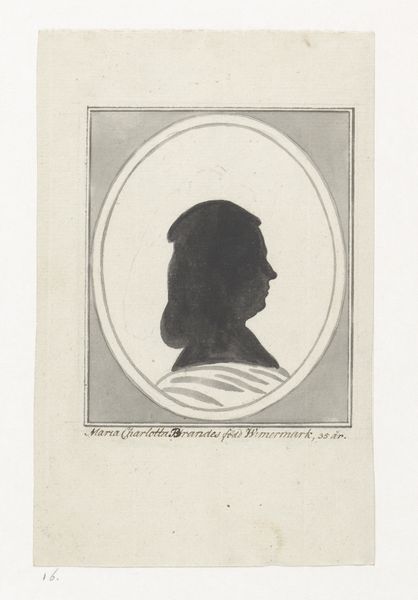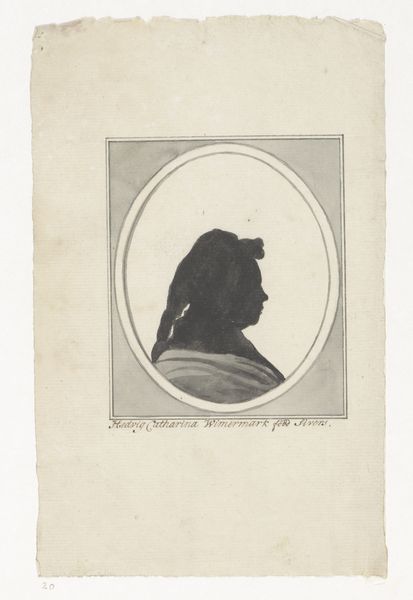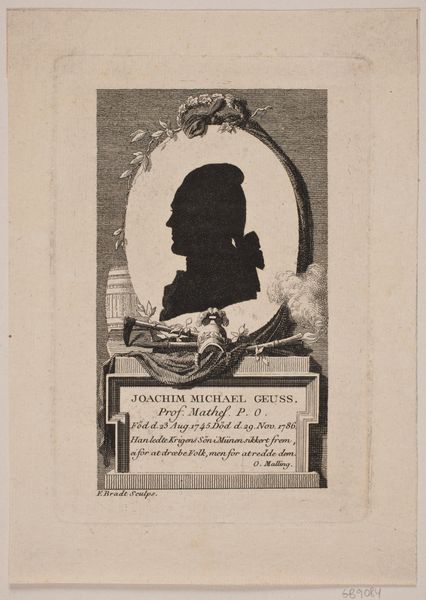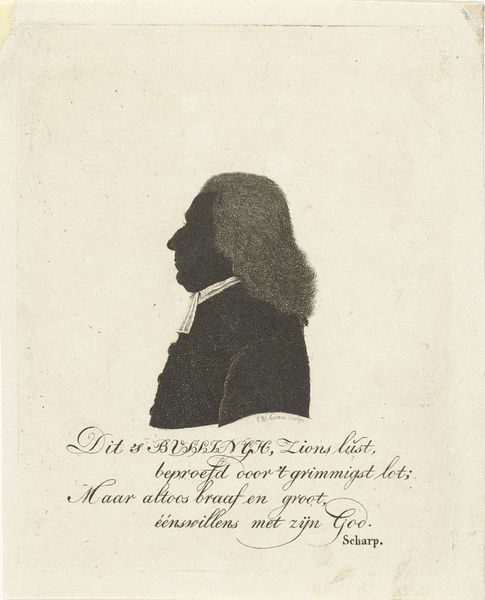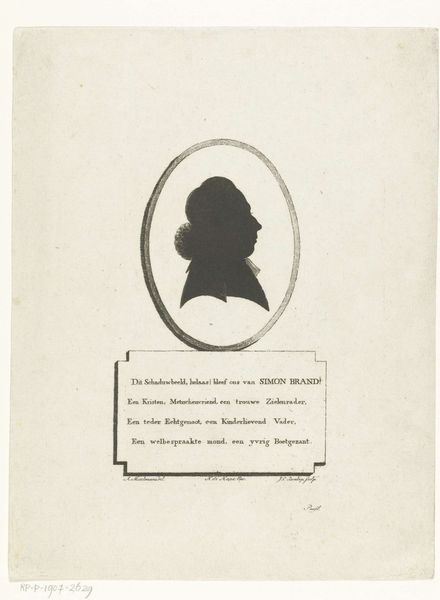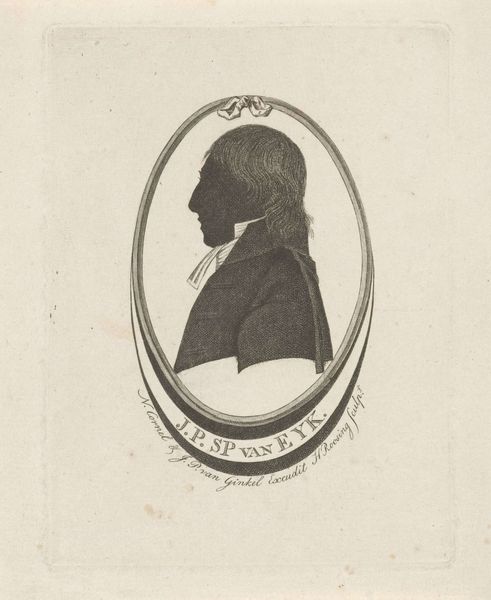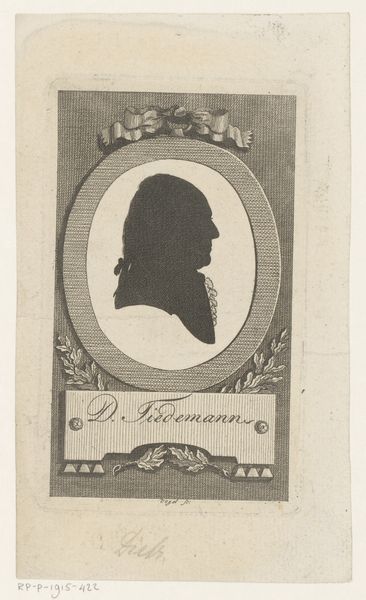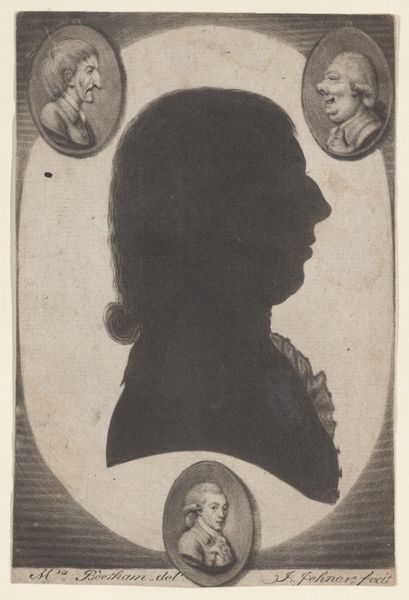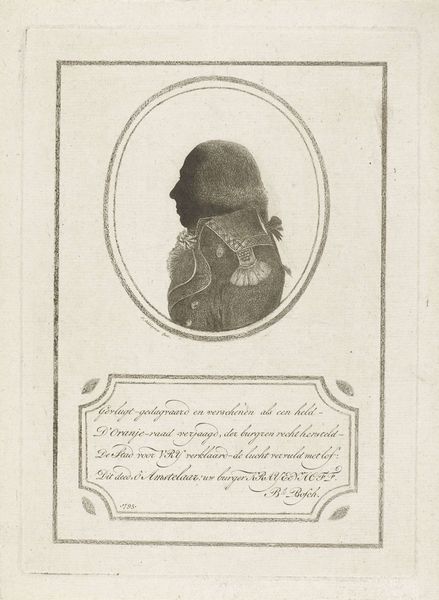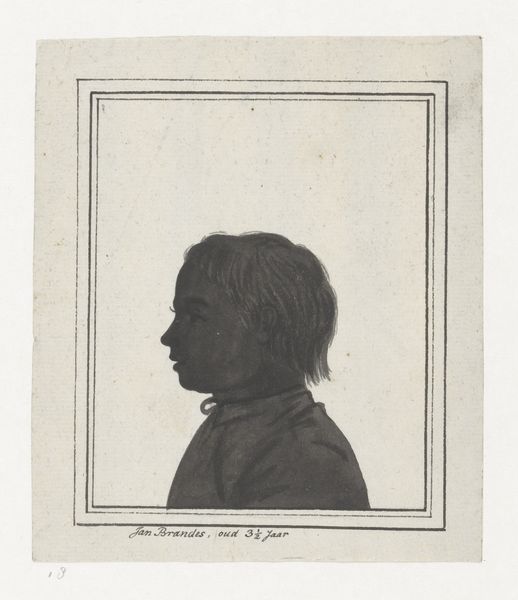
Dimensions: height 195 mm, width 122 mm
Copyright: Rijks Museum: Open Domain
Editor: Here we have "Silhouette of a Man, Looking to the Right," an ink drawing on paper made sometime between 1700 and 1800 by J. Spies. The man’s stark black silhouette against the paper is striking, and somewhat austere. What do you see in this piece, considered within the broader context of art and its place in society? Curator: This work intrigues me, especially when considering the burgeoning role of the individual in the 18th century. Silhouettes like this became popular as a more accessible form of portraiture, democratizing representation beyond the painted portraits of the wealthy elite. Notice how the text beneath the silhouette positions this man. Do you see how virtue and piety are emphasized? Editor: Yes, the text seems to praise his religious devotion and integrity. So this wasn't just a simple likeness, but also a statement about the man’s moral standing? Curator: Precisely! The silhouette serves not just as a physical record, but as a social marker, affirming his place within a specific moral and religious framework. It highlights the institutional role of art in shaping public perception and reinforcing social norms. Editor: That’s fascinating! I hadn’t considered how a simple silhouette could be so intertwined with societal values. I guess images, especially portraits, are rarely ever just about appearances. Curator: Exactly. It also reveals how images gain symbolic weight through socio-political lenses. Did some religious groups frown on elaborate portraiture at that time? Perhaps this simpler form provided an acceptable middle ground. Editor: This gives me so much to consider! Thanks for shedding light on the historical forces at play. Curator: My pleasure! Remember that art always reflects the cultural and institutional values of its time. It's an interesting work.
Comments
No comments
Be the first to comment and join the conversation on the ultimate creative platform.
